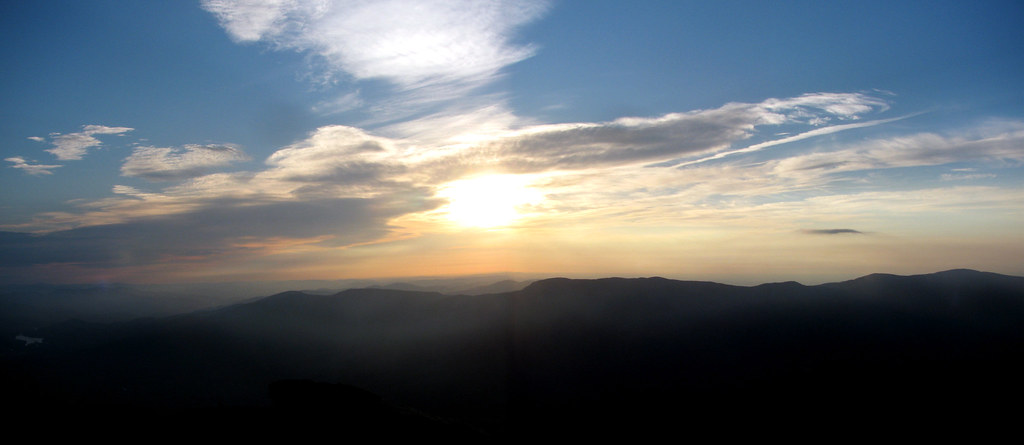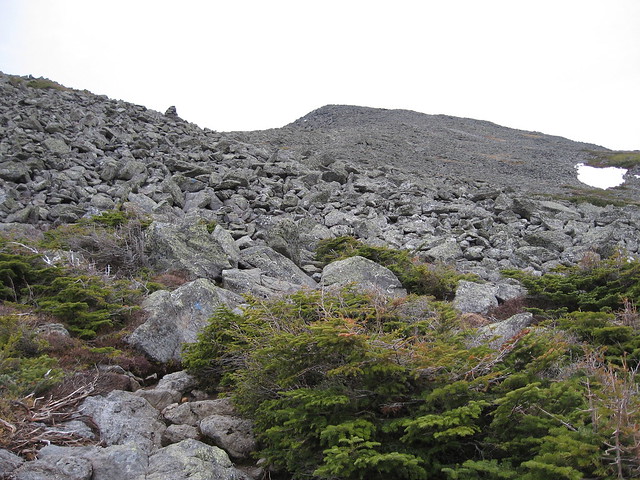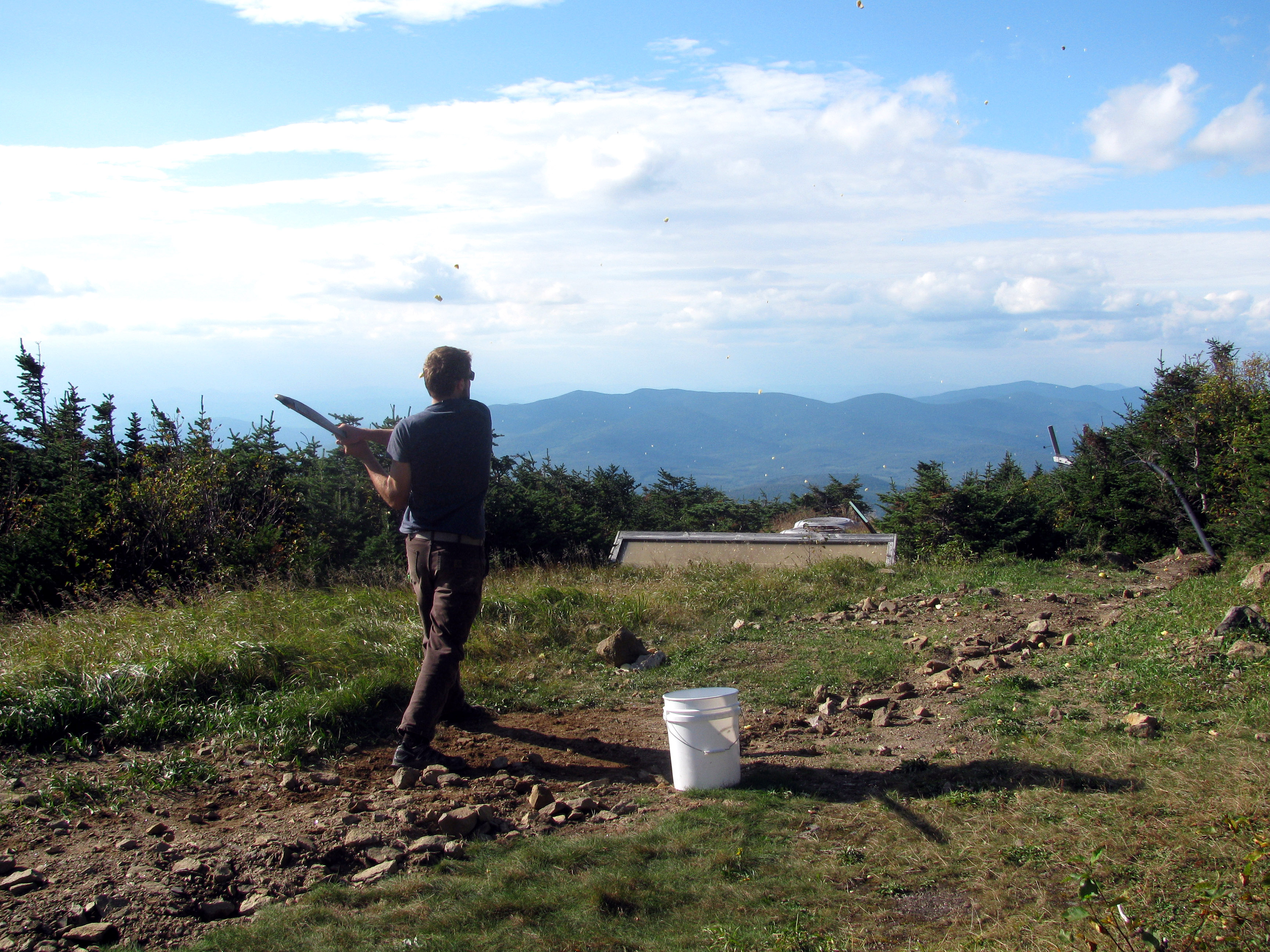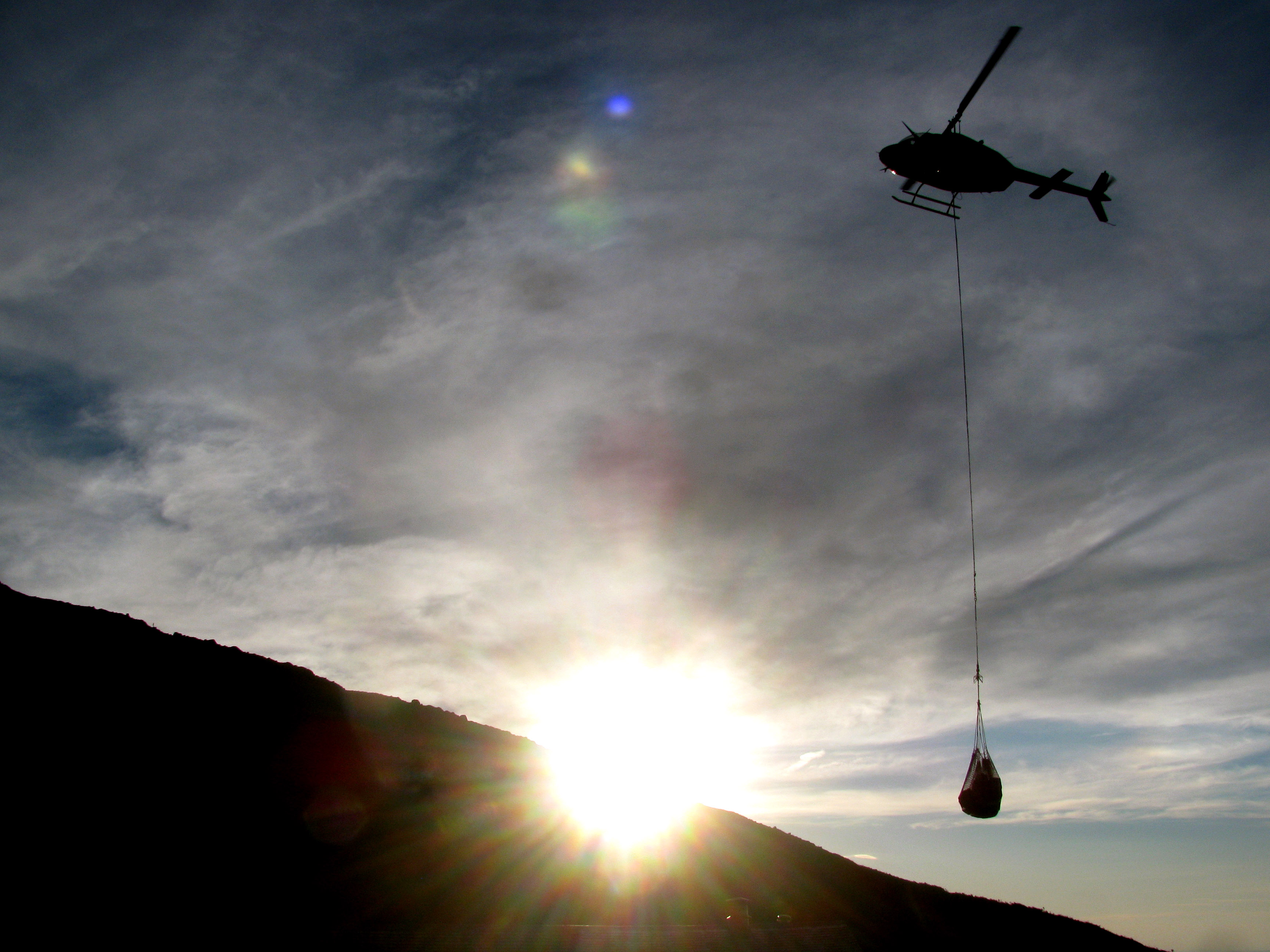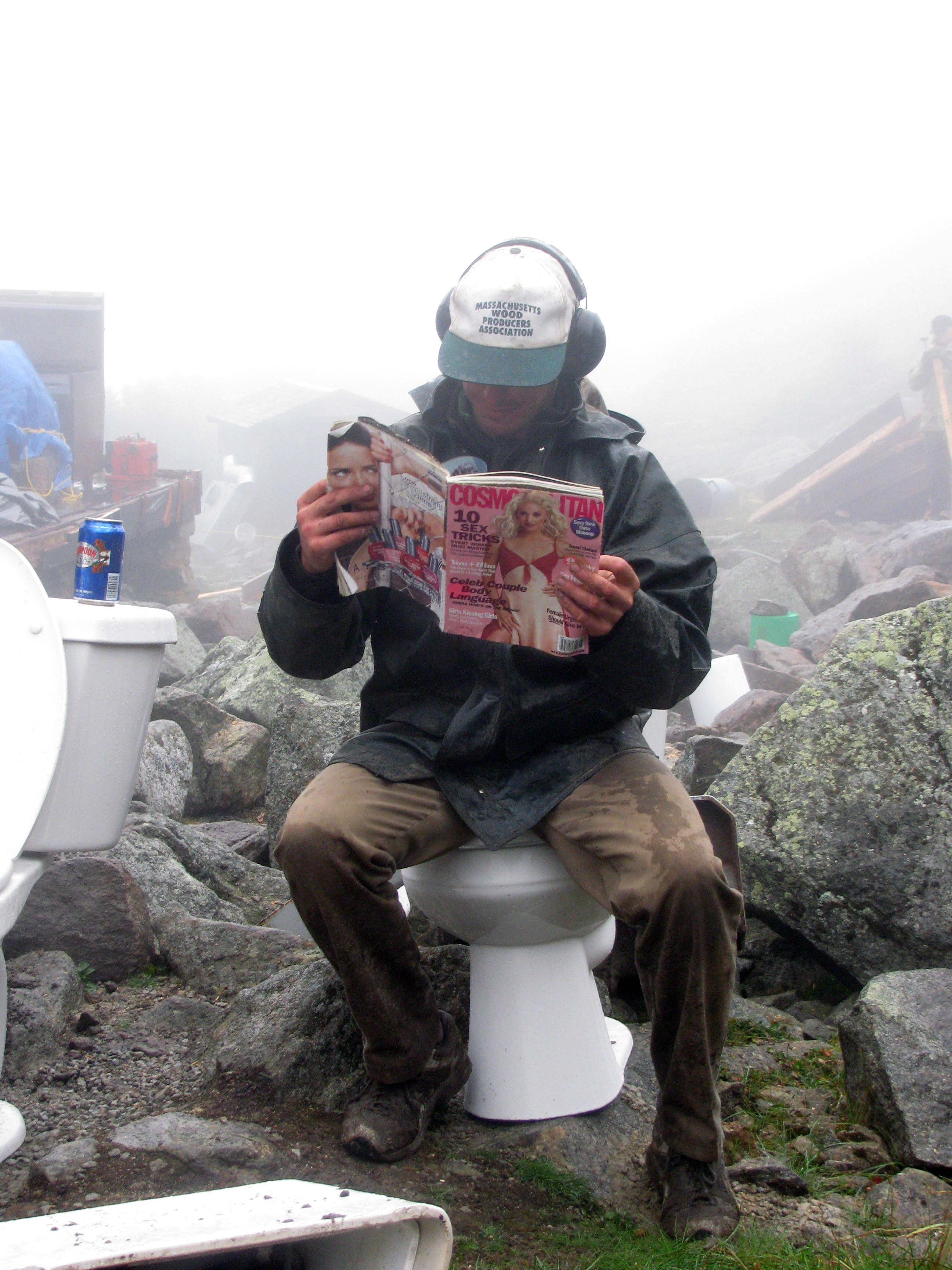As I turn to leave the summit of Madison the wind knocks me in the face. My first few steps are a drunken stagger as I get my sea legs. I hike downhill but its like trying to paddle a canoe upstream. I have to watch my feet to get good footing against the wind, which leaves me periodically wandering off the trail. The steady wind eases slightly as I descend, coming more in gusts than the constant head-out-the-car-window hurricane I enjoyed on the summit. I can see the hut, my home, my work, 500' below as I make my commute and between gusts I can hear the piston-banging sound of the propane generator we use to run our power tools. The crew is getting ready for work. I hustle the rest of the way down and walk into the hut at 7:25.
I walk to my bunk, under which I store all I own at the hut, and pop a few ibuprofen and Tylenol, a therapeutic combination that helps combat the achy trio of bunk sleeping, hut building and mountain climbing walks. I hang up my jacket, pull on my thin work gloves, cinch my tool belt, holstered my hammer and walk out the door, over the waterline trench, passed the old steel door and into what will be the new hut. 7:30. On time and time to work.
I gather a few tools and get to work setting roof trusses with the crew. Steve and I climb to the top of the scaffolding, even in height with what will be the peak of the new roof. I take a 3'' by 8'' truss from Tristen on the Adams (West) side and match its peak with truss Steve got from Curtis and Kate on the East (Madison) side. We add steel brackets, some bolts, washers and nuts, fighting to get all the holes to align. Then, we add the giant steel collar-tie, which stretches from east wall to west across the dinning room, bolting that to the truss and then set another pair of trusses that get bolted alongside. Confusing yes. Basically, it's a wood, steel, wood sandwich that will hold up the roof of the new dinning room.
Tristen and Steve add a steel bracket which will help carry the ridge
There will be no ceiling so the trusses and steel will be exposed to all the hikers who come through. Someday, on a rainy hike, I'll be able to walk inside and see the very nuts, bolts and nails that we worked on this week, holding up the roof which is keeping me dry.
After our 10 a.m. coffee break Tristen and I get to work setting rafters, which attach to the ridge which has been bolted between the trusses. I work along the ridge off a ladder while Tristen mans the wall. I hold my end up while he sets his. Then, I nail mine into place. I add hangers and hurricane ties and then move onto the next. Once an area between two trusses is almost full, my ladder will no longer fit and I nail sketchy wood cleats to the tops of the rafters and climb them to the ridge, leaning down to receive the next rafter and struggling to lift it to the ridge.
Trusses and rafters all in a row
We continue setting rafters the rest of the day, taking lunch at 2 p.m. and heading in for dinner at 6 p.m. Both meals are ready for us when we go inside, Bethany, our cook, is great about that.
Tonight the moon will be bright. I think, I might head out for another hike...
To be continued again... maybe.

